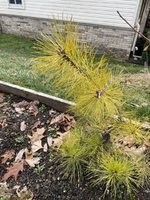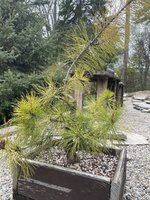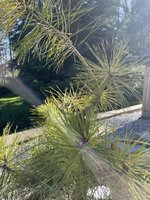I’ve had a JRP inground for a few years and the needles are really starting to yellow. The needles looked ok during the growing season, but I was starting to see some signs that yellowing was coming.
I’ve other pines (JBP & JRP in pots that have no yellowing, their needles look okay).
But, I previously had a JBP in the same grow bed (but a different spot), and it experienced the same yellowing after a few years. I dug it up this year and it subsequently died (due to the yellowing/inground conditions or too much root pruning??? I don’t know).
I don’t plan on digging this up for a few more years as I’m working on healing some cuts. But, I don’t want it to continue to deteriorate. Any thoughts??
Note - I’m not sure if this is relevant, but I’m pretty sure I used a shovel to cut off any extending roots this past Spring - maybe a foot/150mm from the trunk. I think I did the same to the JBP the year before I dug it up.

I’ve other pines (JBP & JRP in pots that have no yellowing, their needles look okay).
But, I previously had a JBP in the same grow bed (but a different spot), and it experienced the same yellowing after a few years. I dug it up this year and it subsequently died (due to the yellowing/inground conditions or too much root pruning??? I don’t know).
I don’t plan on digging this up for a few more years as I’m working on healing some cuts. But, I don’t want it to continue to deteriorate. Any thoughts??
Note - I’m not sure if this is relevant, but I’m pretty sure I used a shovel to cut off any extending roots this past Spring - maybe a foot/150mm from the trunk. I think I did the same to the JBP the year before I dug it up.








